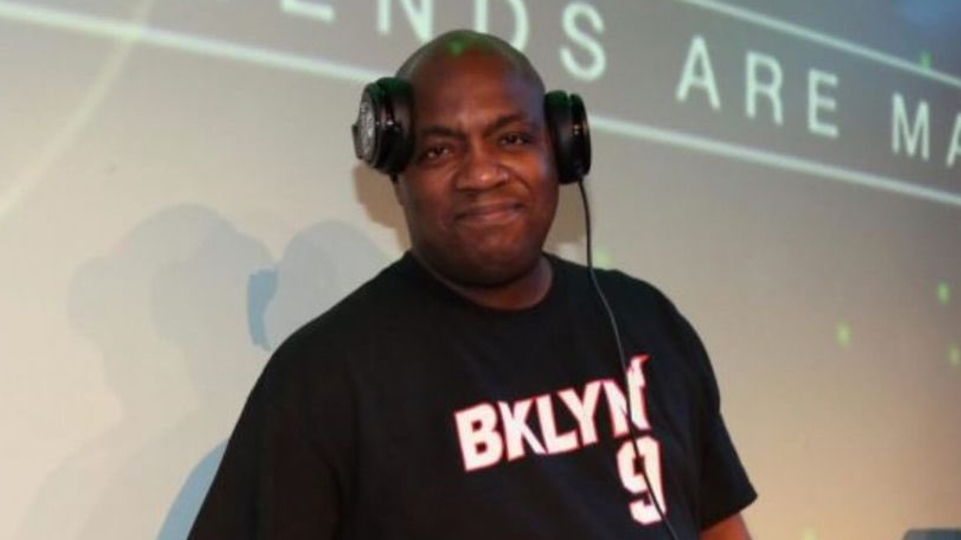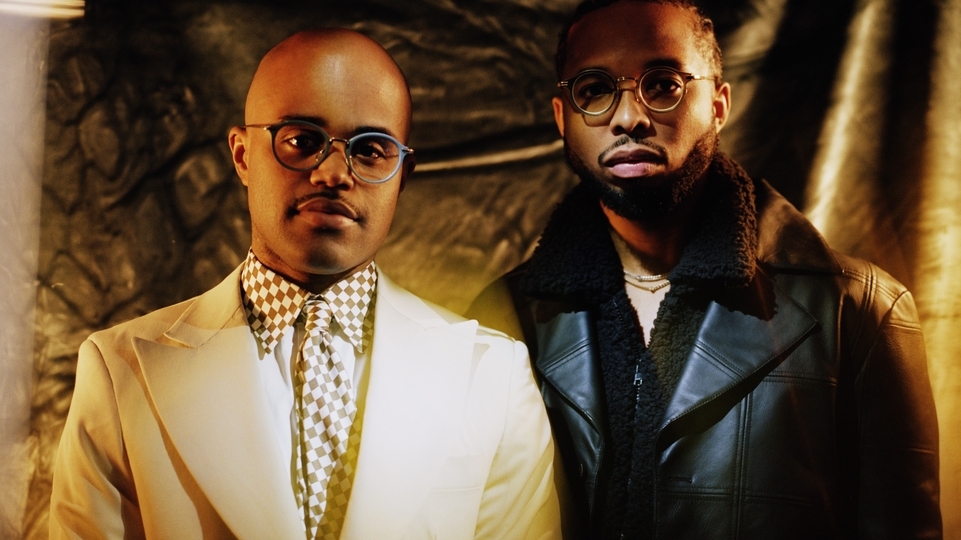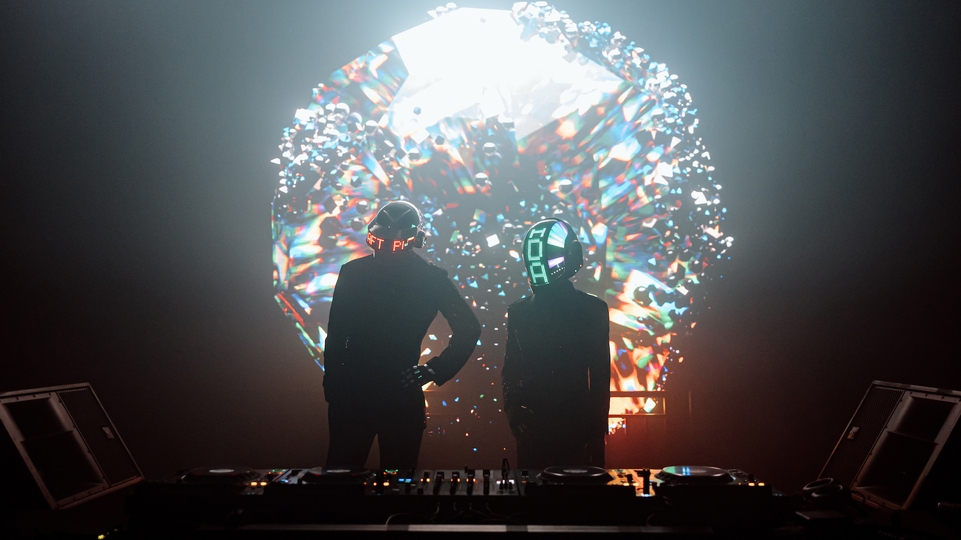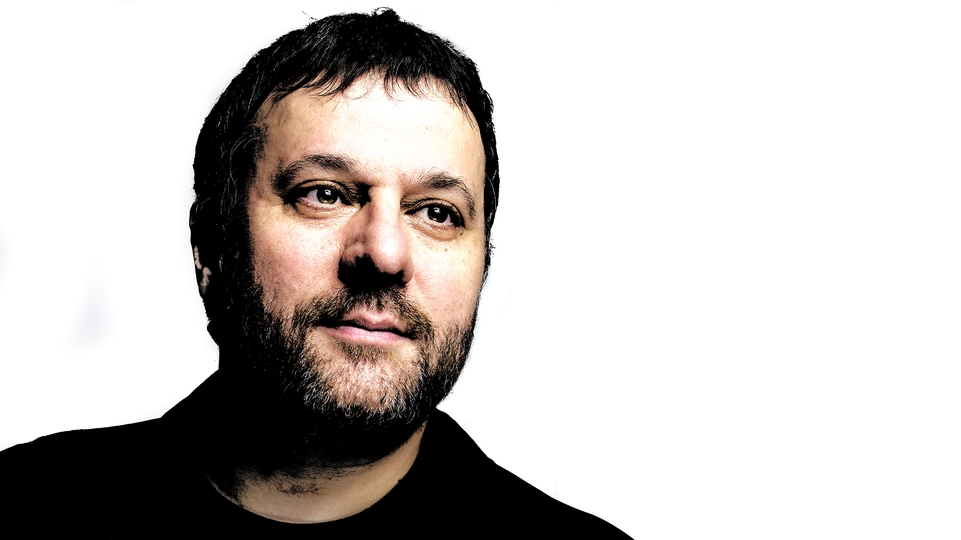
ESG’s infinite influence: how the South Bronx sisters shaped hip-hop and house
When the South Bronx dance-punk outfit ESG released their Martin Hannett-produced debut EP in 1981, they had no idea how pivotal their stripped-back, funk-fueled sound would be on the evolution of hip-hop and house music: ‘UFO’ has been sampled over 500 times; ‘Moody’ was a staple in Larry Levan’s Paradise Garage sets. Four decades later, ahead of their set at Melting Pot & Optimo’s Queen’s Park Spring Weekender, Daniel Dylan Wray tells their story
One day in 1979, a young Renee Scroggins imagined what it would be like if a UFO landed in the housing projects of the South Bronx. At the time, the neighbourhood had spent the best part of a decade on fire, losing an estimated 80% of its housing, and leaving 250,000 people displaced. In these desolate streets, amidst the scorched buildings and mounds of shattered concrete, drugs, gangs and crime were rampant. Scroggins’ elder siblings had become addicts. “It's not a pretty memory,” she recalls today, speaking from her home in Atlanta. Nonetheless, that image of an extra-terrestrial craft landing amongst the ruin and the rubble would ultimately result in one of the most singularly influential pieces of music in recorded history.
‘UFO’ – a stripped-back instrumental filled with whirring guitars, eerie atmospheres, stark bass and minimalist drums – appeared on the 1981 debut EP from ESG, the group originally composed of Renee and her sisters Valerie, Deborah and Marie. Recorded by celebrated Factory Records producer Martin Hannett, along with 99 Records’ Ed Bahlman, the release fused the danceable rhythms of funk and soul with the gloomy post-punk sound of northern England at the time. The result was a unique dance-punk hybrid that played a pivotal role in shaping the sounds of house and hip-hop.
‘UFO’ alone would go on to be sampled over 500 times by a wide array of game-changing names such as J Dilla, Public Enemy, MF Doom, 2Pac, Nas, N.W.A, Miles Davies, Beastie Boys, Nine Inch Nails, DJ Shadow, and countless others. “We never went out to make a statement or change music,” says Scroggins, the group’s vocalist. “We just did the music we liked to do.”
But ESG undoubtedly did change music, and though the journey’s been far from easy, over 40 years after that fateful release, they are still pulling audiences and influencing new generations of artists today. “I’ve been playing ESG records in DJ sets for over 30 years,” says Keith McIvor, aka Optimo’s JD Twitch, who will be hosting ESG for their only UK show this year at the Queen’s Park Spring Weekender. “They played a fundamental part in shaping hip-hop and house music and I’m an uber fan. They were one of the foundational acts that inspired me to start Optimo, which initially was very much about playing lots of music that was not electronic but absolutely worked on the dancefloor.”

“Getting those instruments and that distraction was like, wow. It was like the window opened up and the sun came in. That's my greatest memory.” – Renee Scroggins
Today, ESG remains a family affair but with Sroggins’ children now playing the band rather than her sisters. The group’s story is set to be told in a new documentary directed by Scroggins called Are You Serious? The ESG Story, which will be playing before they take the stage on tour shows throughout 2024.
All of this was initially made possible by Scroggins’ mother, who, determined not to lose any more children to drugs or the encroaching crime all around them in the Bronx, decided her daughters needed some focus. On Christmas morning in 1978, the excited teenagers came hurtling into the living room to find instruments – bass, drums, tambourine – wrapped under the tree. Just like that, ESG – Emerald, Sapphire, Gold – was born. “Getting those instruments and that distraction was like, wow,” remembers Scroggins. “It was like the window opened up and the sun came in. That's my greatest memory.”
Into that window of her childhood home also came the formative sounds of the multicultural neighbourhood they lived in; everything from soul to Latin music could be heard pumping in from the streets. The sisters also loved the music of James Brown, and were especially influenced by the bridge breakdowns of his tunes. “That was the funkiest part of the song and you didn't want it to stop,” says Scroggins. “So that was the thought for our music: that if we made this bridge keep going, it would be a heck of a dance song.”
The phrase “take it to the bridge” became something of a guiding mantra for the young band, as their groove-focused sound began to take shape. Friday night rehearsals at home would be for an audience of one. “Our mom didn’t tell us we were terrible and wasn’t overly critical,” Scroggins remembers. “She would just be encouraging and say, ‘it needs a little more work’.”
In 1979 their mother entered them into a talent show, where one of the judges, Ed Bahlman, scouted them and became their unofficial manager. Bahlman went on to found 99 Records, home to bands from the burgeoning no wave and leftfield disco scene such as Liquid Liquid, Glenn Branca, Bush Tetras and, of course, ESG themselves. However, it wasn’t until some curious Mancunians came to town that the sisters would record their debut release.
In 1980, ESG were booked to support A Certain Ratio at the Hurrah venue on the Upper West Side. Factory Records founder Tony Wilson was there, and during soundcheck, his ears pricked up. “He said, ‘I was really listening to you and I was thinking: how would you like to make a record?’” recalls Scroggins. “We had been playing for about a year, and I had asked Ed repeatedly [about making a record] and he was like, ‘yeah yeah, we'll get there’. Then this guy sees us for the first time and he just asks us.”
That was Wednesday, and by Saturday ESG were in the Eastern Artists Recording Studio with Martin Hannett in New Jersey, joined by their percussionist friend Tito Libran, who went on to play with the band as a fully-fledged member for years. Aside from being a famed producer for Factory Records, who by this stage had produced records by Joy Division, Magazine, The Durutti Column and John Cooper Clarke, Hannett came with a reputation. A hard boozer and drug taker at various stages in his life, he was also known to be irascible, wildly unpredictable, and alleged to have carried a handgun on occasion. But this wasn’t the man Scroggins met. “Everybody asks: ‘was he like the guy in 24 Hour Party People?’” she remarks of the 2002 film, in which Hannett is portrayed as a wildman producer. “He wasn’t at all. But I had no idea who he was, I'd never heard of him. So I think because I wasn't intimidated by who he was, we were just being genuine people with one another.”
It was here that the image of extraterrestrials landing in the South Bronx projects was put to record. But only just. “‘UFO’ almost didn't even get recorded,” laughs Scroggins. “We were at the end of the recording session and there was a limited amount of tape left, so Martin was like, ‘do you have a song that's under three minutes?’ The thing that was so funny was that my family hated ‘UFO’ but Martin understood it and he felt the vibe. The rest is history.”

"As long as I can sing the song and give a message of ‘be yourself, dance, and have fun because life is hard enough’, then I’ll keep going.” – Renee Scroggins
ESG’s self-titled six-track debut EP was released in 1981, and ‘UFO’ was sampled as soon as 1982, the commonly accepted first instance being in a live set from Force MC’s at Spring Valley. From there it never stopped. The first officially released appearance of the sample was in Cut Master D.C.’s ‘Brooklyn Rocks the Best’ in 1986. Sometimes it would end up as the backbeat of a song, like the 1988 remix of Big Daddy Kane’s ‘I’ll Take You There’. Its otherworldly siren buzz plays throughout Miles Davies’ ‘Fantasy’ and The Notorious B.I.G.'s 'Party and Bullshit'.
Elsewhere, its appearance is more fleeting and subtle, like when Public Enemy briefly wove it into the textural fabric of ‘Night of the Living Baseheads’. However, such is its versatile nature, even today it’s still being rinsed, with everyone from Nas and Isaiah Rashad to experimental rock outfit Liars incorporating it into their tracks.
Another track from ESG’s debut that would prove incredibly influential was ‘Moody’. While ‘UFO’ became a go-to sample in hip-hip, this one helped lay the groundwork for house music, a few years before it truly came alive. The track sounds like something that could have been made years later, in a world of 808s and 303s. Its irresistible hi-hat dances on top of a pulsing bassline, as drums and congas interlock into a wonderful rhythmic flurry and Scroggins’ simple yet infectious vocals punctuate the track with potency.
The song’s endlessly hypnotic bassline was sampled on the 1985 track ‘Like This (House Mix)’ by Chip-E, one of the cornerstone records of the soon to be booming house sound, which featured additional production and vocals from pioneering figures such as J.M Silk, Frankie Knuckles and K.Joy. A few years later, it appeared again in Farley “Jackmaster” Funk’s ‘Hey Norton (Aw Shucks)’. It was also on heavy rotation in DJ sets from the legendary Larry Levan in New York’s Paradise Garage and Ron Hardy in Chicago’s Muzic Box, two nexus points for dance music’s evolution. In 1987, when Paradise Garage shut its doors for the last time, ESG were invited to play the closing party.
Given their Factory links via Hannett, ESG helped bridge the gap between New York and Manchester’s bustling music scenes; their music positioned them as an equally important force on both sides of the Atlantic. ‘Moody’ became a staple in many UK DJs’ sets after May 1982, when the group were flown over to play The Haçienda’s opening party (bizarrely, on the same bill as comedian Bernard Manning).
“I still have the invitation to play the first night of The Haçienda,” says Scroggins. “People are always asking what it was like and I always say ‘dusty’. They were still drilling and putting the place together and I'm asthmatic so the thing that always comes to my mind is the sawdust.” Indeed, this was years before the Madchester hub had reached its near mythical status. So unimpressed was Manning with the place that night that he proclaimed: "I've played some shitholes during my time, but this is really something."

In 1983, the Scroggins sisters and Libran released their debut album on 99 Records, ‘Come Away With ESG’, which further established them as pioneers of a sound that, over the next decade, would be sampled and mimicked endlessly, but at the time felt like a unique concoction of disco, post-punk and funk – as exemplified on the taut, punchy and outrageously groove-locked tracks ‘Dance’ and ‘The Beat’. However, this was during sampling’s nascent years, and though their work was widely used, it was rarely credited and almost never remunerated. “It was horrible,” recalls Scroggins. “We just weren't compensated and it wasn't until the big acts started to get sampled that people were like ‘oh, no, no, no, we have to do something about that’.”
In 1984, 99 Records sued Sugar Hill Records over an uncredited interpolation of Liquid Liquid’s ‘Converge’ bassline in Grandmaster Melle Mel’s single ‘White Lines (Don't Don't Do It)’. While the case was ultimately successful, Sugar Hill declared bankruptcy instead of paying the court ordered $660,000. Disillusioned and wiped from legal costs, Bahlman folded 99 and left the music industry for good. ESG found themselves in something of a wilderness period, despite their music’s omnipresence. “People were outright using our music and getting paid for it,” Scroggins says. “And I'm sitting there in a project apartment with my two kids basically hustling just to feed them. I was doing regular jobs on top of doing the band. That was very upsetting.”
It wasn’t until 1992 that ESG released another record, the aptly titled ‘Sample Credits Don't Pay Our Bills’ EP. It would be another decade by the time the band really started to feel the benefit of their seismic impact on popular music’s DNA. When Soul Jazz records released the compilation, ‘A South Bronx Story’, in 2000 it neatly dovetailed into a then flourishing dance-punk scene. With everyone from LCD Soundsystem and Yeah Yeah Yeahs to Hot Chip openly paying tribute to their work, the band once again saw their influence reflected in contemporary music. “It seems like each decade I get a new bunch of fans,” says Scroggins. “It just goes to show that the music is classic.” And this time, for a change, that renewed interest could actually be spun into income, as royalties were finally getting paid by way of the release.
Despite all of this, however, there’s still a sense that success never quite materialised for ESG in a way they were fully deserving of. “I never really felt that we had that moment of [feeling like] ‘our time has come’,” says Scroggins. “I mean, to this day, people don't exactly know who we are.”
All the same, 46 years after that group of Bronx sisters picked up instruments from under the Christmas tree and made plans to “take it to the bridge”, the sounds they forged still reverberate loudly, their influence keenly felt in infinite beats. “When I'm on that stage from day one to day now, I feel that music,” says Scroggins. “It’s vibrating through my mind and my body and I love putting it out there. My knees are giving me trouble, but as long as I can sing the song and give a message of ‘be yourself, dance, and have fun because life is hard enough’, then I’ll keep going.”
ESG will play the Queen’s Park Spring Weekender on 5th May. Get your tickets here.








